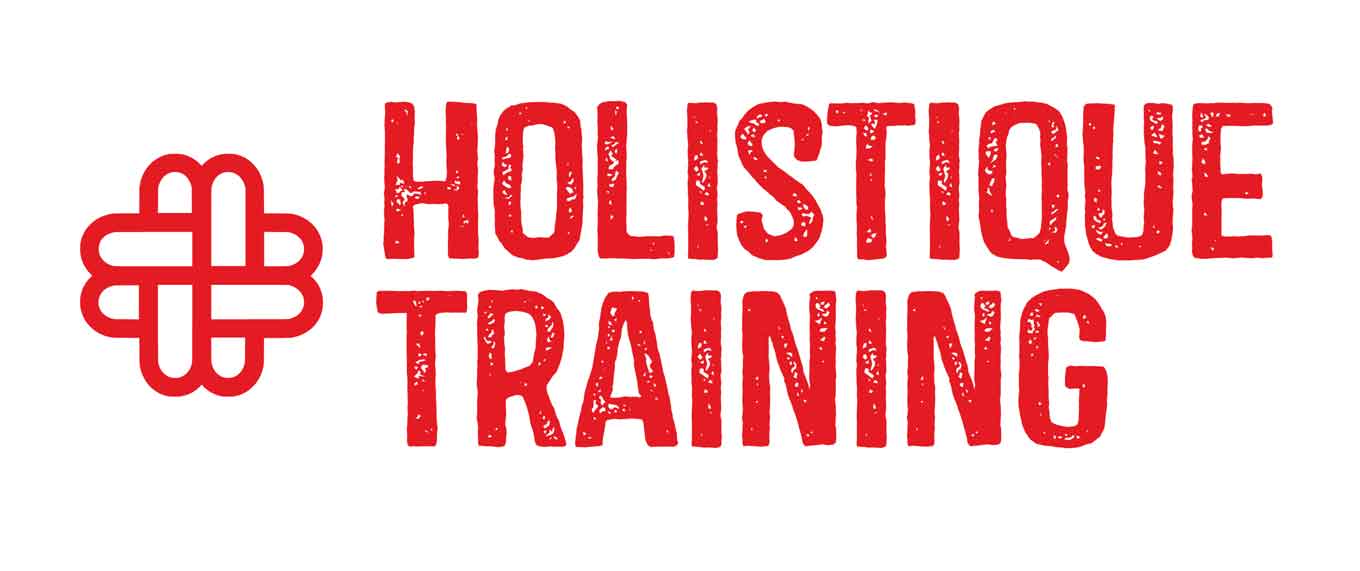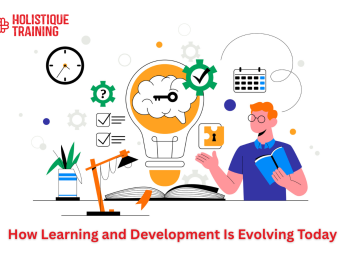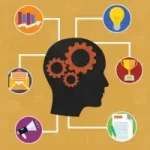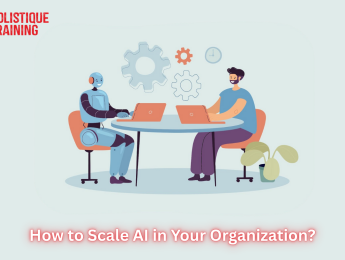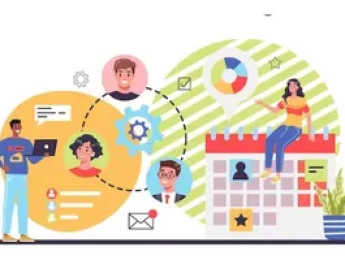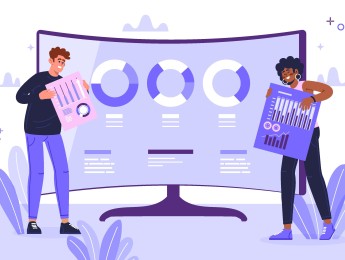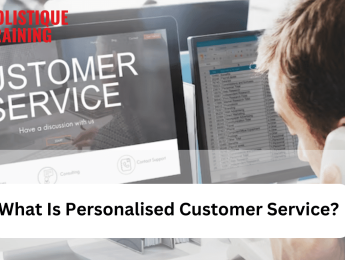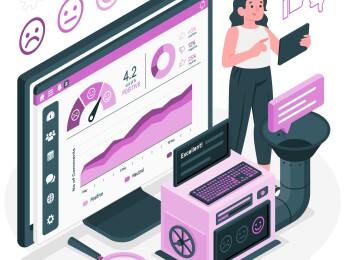- Table of Contents
- 1. Introduction
- 2. From Classroom to Cloud: The Digital Transformation of Learning
- Traditional vs Digital Learning Formats
- Advantages of Digital Learning
- Disadvantages
- 3. Personalized Learning Paths: One Size No Longer Fits All
- Corporate Example
- Supporting Research
- 4. Soft Skills Matter More Than Ever
- Emotional Intelligence (EI)
- Collaboration
- Critical Thinking
- Adaptability
- 5. Microlearning and Just-in-Time Learning: Speed Meets Relevance
- What Is Microlearning?
- What Is Just-in-Time Learning?
- Key Benefits
- Corporate Adoption and Impact
- Final Thoughts
- 6. AI and Automation in L&D: Friend or Foe?
- Opportunities
- Concerns
- 7. Upskilling vs. Reskilling: What Do Organisations Really Need?
- Real-World Example
- 8. Learning as a Culture: Beyond Programmes and Courses
- The Need for a Learning Culture
- Leadership Involvement: Driving by Example
- Recognition and Incentives: Making Learning Visible
- Embedded Learning: Seamless and Contextual
- The Long-Term Payoff
- 9. Measuring Impact: Is L&D Delivering ROI?
- The Kirkpatrick Model: A Time-Tested Framework
- Learning Analytics: Data-Driven Insights
- Challenges in Measuring ROI
- A Strategic Approach to ROI
- 10. Conclusion
1. Introduction
In recent years, the landscape of learning and development (L&D) has experienced a profound transformation. Driven by rapid digitisation, the shift towards hybrid and remote work models, and the disruptive influence of artificial intelligence, the way organisations train and upskill their workforce is evolving at an unprecedented pace.
Previously, professional development was often confined to structured in-person workshops or annual training days. However, the 21st-century workplace demands agility, adaptability, and continuous learning. The global pandemic further accelerated the adoption of virtual learning platforms, proving that flexible, accessible learning solutions are not only possible but often preferable.
At the heart of this change is a simple truth: organisations that fail to invest in the learning and development of their employees risk becoming obsolete. In today’s knowledge economy, staying competitive means nurturing a workforce that is empowered with up-to-date skills, able to work collaboratively, and ready to innovate.
In this article, we will discuss how learning and development are shifting from traditional classroom settings to digital ecosystems, explore the rise of personalised and microlearning models, evaluate the impact of soft skills, artificial intelligence, and reskilling trends, and ultimately assess how businesses can cultivate a strong learning culture while measuring real impact.
2. From Classroom to Cloud: The Digital Transformation of Learning
The traditional model of learning—defined by classroom lectures, printed materials, and rigid schedules—is being replaced by digital platforms that offer flexibility, interactivity, and scalability. Learning Management Systems (LMS), Massive Open Online Courses (MOOCs), mobile learning, and even virtual reality (VR) training sessions are reshaping the way professionals engage with knowledge.
Traditional vs Digital Learning Formats
Before diving into digital tools, it's important to understand the comparison:
Feature | Traditional Workshops | Digital Learning Platforms |
Location | On-site, in person | Remote, accessible anywhere |
Timing | Scheduled | Self-paced or on-demand |
Cost | Often higher (venue, travel) | More cost-effective per learner |
Engagement | Face-to-face, limited tech | Multimedia, gamified, interactive |
Scalability | Limited | Global reach |
Assessment | Manual testing | Automated quizzes, adaptive learning |
Advantages of Digital Learning
- Flexibility: Learners can engage at their own pace and convenience.
- Accessibility: Geographically dispersed teams can access the same high-quality materials.
- Analytics: Learning behaviours can be tracked in real time, enabling data-driven improvements.
- Cost-effectiveness: Reduces overhead costs related to physical spaces and printed materials.
Disadvantages
- Digital fatigue: Overreliance on screens can reduce learner engagement.
- Limited human interaction: Certain skills (e.g., negotiation or leadership) may require in-person nuance.
- Tech literacy gaps: Not all employees are equally comfortable with digital platforms.
Still, the digital shift remains a net positive. Leading companies such as PwC and Microsoft have already adopted immersive VR learning modules and custom-built LMS to foster skills development across continents, setting a new precedent for the industry.
3. Personalized Learning Paths: One Size No Longer Fits All
Gone are the days when a uniform training programme suited every employee. Thanks to learning analytics and AI-driven recommendations, personalised learning paths are becoming the norm.
Personalised learning adjusts content delivery based on a learner’s current role, career goals, and past performance. It enables targeted upskilling that maximises efficiency and engagement.
Corporate Example
At IBM, the “Your Learning” platform uses AI to suggest content based on an employee’s role, learning history, and desired competencies. This has significantly improved learner satisfaction and time-to-skill rates.
Supporting Research
According to a 2023 LinkedIn Workplace Learning Report, 78% of L&D professionals believe personalised learning increases employee engagement, and 64% say it improves business outcomes.
This shift to individualised learning models mirrors consumer behaviour trends—we expect personalisation in our media, shopping, and now in our professional development.
4. Soft Skills Matter More Than Ever
While technical proficiency remains important, soft skills are emerging as the real differentiator in dynamic workplaces.
Emotional Intelligence (EI)
EI allows individuals to understand, regulate, and express emotions effectively. High EI contributes to conflict resolution, empathy in leadership, and team cohesion. A study by TalentSmart revealed that 90% of top performers possess high emotional intelligence.
Collaboration
Remote and hybrid environments require seamless communication across borders and time zones. Tools like Slack and Microsoft Teams are useful, but the human ability to coordinate, compromise, and co-create remains irreplaceable.
Critical Thinking
As automation takes over routine tasks, the ability to think critically and solve novel problems becomes vital. The World Economic Forum lists critical thinking as a top 5 skill for the future workforce.
Adaptability
Markets evolve rapidly. Employees must shift priorities, learn new tools, and accept ambiguity. Adaptability ensures resilience in the face of change.
Soft skills are difficult to automate, making them more valuable than ever. They enhance employee effectiveness and are linked to better leadership, lower turnover, and stronger team performance.
5. Microlearning and Just-in-Time Learning: Speed Meets Relevance
In an age where attention spans are shrinking and job demands are increasing, traditional, time-intensive training models no longer suffice. Employees need quick, relevant, and easily accessible learning experiences that can be seamlessly integrated into their daily workflow. This is precisely where microlearning and just-in-time learning come into play.
What Is Microlearning?
Microlearning refers to short, focused learning units—typically lasting anywhere from two to ten minutes—that address a specific skill or knowledge point. These can take the form of quick videos, infographics, step-by-step tutorials, flashcards, or even interactive quizzes. The content is designed to be easily digestible and is often optimised for mobile devices, making it accessible wherever and whenever needed.
Rather than overwhelming learners with lengthy modules, microlearning breaks down information into manageable chunks that are easier to absorb and retain. This format aligns closely with the way modern professionals consume information—on-demand, in real time, and often on the go.
What Is Just-in-Time Learning?
Just-in-time learning complements microlearning by delivering content exactly at the moment it is needed. Imagine a sales associate about to meet a new client accessing a short refresher on objection-handling techniques. Or a project manager reviewing a tutorial on risk analysis before a high-stakes meeting. This approach empowers employees to apply new knowledge immediately, improving both confidence and performance.
Together, microlearning and just-in-time learning form a powerful duo that enables continuous learning without pulling staff away from their core responsibilities.
Key Benefits
Let’s explore the core advantages of this approach in more detail:
1. Convenience
Microlearning fits effortlessly into even the busiest schedules. Whether during a lunch break, a commute, or in between meetings, employees can engage with content in short bursts without needing to block off hours of time. The ability to pause and resume at any point also adds flexibility.
2. Improved Retention
Microlearning combats this by offering repetition and reinforcement in short, contextually relevant bursts. Focused content is easier to remember and more likely to be applied on the job.
3. Enhanced Performance
When employees can access knowledge exactly when they need it, they are better equipped to make informed decisions, avoid errors, and work more efficiently. This on-the-spot support reduces reliance on supervisors or manuals and encourages self-sufficiency.
Corporate Adoption and Impact
Global organisations such as Google, Unilever, and Coca-Cola have integrated microlearning platforms into their L&D strategies with impressive results. For instance, Unilever launched a mobile learning platform delivering five-minute lessons on leadership, compliance, and digital skills. The company reported significant improvements in both completion rates and post-training application.
Likewise, Google encourages “bite-sized learning moments” across departments by offering searchable libraries of micro-content that employees can access instantly. This has fostered a culture of independent, self-directed learning.
Final Thoughts
Microlearning and just-in-time learning are not simply trends—they are practical responses to the real-world demands of the modern workplace. By offering content that is relevant, accessible, and immediately applicable, these approaches bridge the gap between knowing and doing.
As attention spans dwindle and agility becomes a competitive advantage, organisations that adopt these learning strategies will be better positioned to build high-performing, adaptable teams ready to meet evolving business challenges.
6. AI and Automation in L&D: Friend or Foe?
AI is transforming L&D by powering smarter content delivery, predictive analytics, automated assessments, and even virtual coaching.
Opportunities
- Content recommendation engines provide tailored suggestions.
- Chatbots and virtual mentors offer instant answers and guidance.
- Adaptive testing adjusts question difficulty in real time.
Concerns
- Bias in algorithms may perpetuate inequities.
- Job displacement fears may deter employees from embracing automation.
- Overdependence on machines could reduce human interaction and empathy in learning.
Overall, AI is a powerful ally—if used ethically and inclusively. It offers L&D teams the ability to scale and customise like never before.
7. Upskilling vs. Reskilling: What Do Organisations Really Need?
Both upskilling and reskilling are vital in the face of automation and AI. But they serve different purposes.
Term | Definition | Example |
Upskilling | Enhancing existing skills | Learning new data analytics tools |
Reskilling | Learning entirely new skills | Transitioning from admin to coding role |
Real-World Example
Amazon’s “Upskilling 2025” initiative aims to train 100,000 employees for high-demand roles in IT and healthcare, reflecting a clear shift in organisational strategy.
Companies need to invest in both depending on their talent pipeline, market demands, and digital maturity.
8. Learning as a Culture: Beyond Programmes and Courses
In the evolving world of work, learning can no longer be seen as a tick-box exercise or a separate function isolated from day-to-day operations. Instead, forward-thinking organisations are embedding learning deeply into their organisational culture—turning it into a mindset and a shared value that informs how teams collaborate, grow, and innovate.
The Need for a Learning Culture
A learning culture is one in which continuous development is not only encouraged but expected. It extends beyond formal programmes and annual training sessions, reaching into everyday interactions, team meetings, feedback loops, and performance reviews.
Why is this so important? In a volatile, fast-paced environment, knowledge has a shorter shelf life. Skills that were valuable five years ago may already be outdated. To remain relevant and competitive, organisations must build internal ecosystems where knowledge flows freely and employees are empowered to learn, unlearn, and relearn as needed.
Leadership Involvement: Driving by Example
Creating a learning culture begins at the top. When senior leaders prioritise their own development, talk openly about their learning journeys, and allocate time and resources for employee growth, they send a powerful message. Leadership involvement signals that learning is not optional or remedial—it is strategic.
For example, leaders at global firms like SAP and Adobe participate in open learning challenges alongside their teams. This kind of modelling reduces stigma, normalises learning, and strengthens trust.
Recognition and Incentives: Making Learning Visible
To encourage continuous learning, it’s vital to recognise and reward those who actively pursue growth. This could involve formal methods such as digital badges, certifications, or inclusion in talent pipelines, or more informal approaches like peer recognition or shout-outs during team meetings.
Incentives need not be monetary. Access to new projects, visibility with senior leaders, or extra development time can be equally motivating. When learning is visibly celebrated, it fosters positive reinforcement across the organisation.
Embedded Learning: Seamless and Contextual
One of the most effective ways to make learning part of organisational DNA is through embedded learning—integrating knowledge acquisition into everyday workflows. Platforms like Microsoft Viva, Degreed, and Fuse offer seamless access to content within productivity tools, reducing the friction between learning and working.
This allows employees to upskill on the job, at the moment of need. Whether it's a short tutorial before a client call, or a checklist embedded in a CRM tool, contextual learning ensures that development is directly tied to performance.
Moreover, embedding learning into regular processes—such as onboarding, project retrospectives, or performance reviews—reinforces its relevance and impact. Learning becomes a natural outcome of doing, not a separate activity that disrupts work.
The Long-Term Payoff
Organisations that foster a genuine culture of learning benefit from higher engagement, greater innovation, and more resilient teams. Employees in such environments are more likely to stay, contribute proactively, and adapt to change.
In essence, learning cultures future-proof the organisation. They ensure that change isn’t feared but embraced—and that growth is a shared mission, not just an individual pursuit.
9. Measuring Impact: Is L&D Delivering ROI?
In today’s performance-driven business climate, it’s no longer enough for organisations to simply provide learning opportunities—they must demonstrate that these investments are generating tangible returns. However, evaluating the real impact of learning and development (L&D) initiatives remains one of the most persistent challenges for HR and leadership teams alike.
Understanding whether a training programme has truly improved skills, changed behaviours, or contributed to business goals requires more than end-of-course surveys. It necessitates a multi-layered approach, combining qualitative insights with robust data analytics to provide a well-rounded picture of success.
The Kirkpatrick Model: A Time-Tested Framework
The Kirkpatrick Model is one of the most widely recognised frameworks for evaluating training outcomes. It offers a structured, four-tiered method to measure different levels of learning effectiveness:
- Reaction – This level gauges how participants respond to the training. Did they find it engaging, relevant, and well-delivered? Feedback forms and satisfaction surveys are common tools used here.
- Learning – At this stage, the focus is on whether learners actually acquired new knowledge, skills, or attitudes. Pre- and post-training assessments are often deployed to measure improvements.
- Behaviour – Arguably the most critical tier, this examines whether the learning has translated into behavioural changes on the job. Managers may observe team members or conduct performance reviews to assess application.
- Results – The final level evaluates the broader organisational impact. Has the training led to measurable improvements such as increased sales, better customer service, reduced errors, or faster project delivery?
Each layer of this model requires distinct metrics and evidence, but when used collectively, they provide a comprehensive evaluation that goes beyond surface-level indicators.
Learning Analytics: Data-Driven Insights
Modern L&D teams increasingly turn to learning analytics to supplement traditional evaluation methods. These tools analyse digital footprints left by learners—such as time spent on modules, engagement rates, quiz scores, and course completion—to generate detailed reports.
Platforms like EdCast, Looop, and Cornerstone OnDemand are designed to integrate with LMS systems and provide real-time dashboards. These analytics help L&D leaders identify which content is most effective, who needs additional support, and how learning progress aligns with business KPIs.
Moreover, predictive analytics can anticipate learner drop-off points, suggest optimal content sequencing, or highlight skill gaps before they become performance issues.
Challenges in Measuring ROI
Despite advancements in evaluation models and analytics platforms, several key obstacles still hinder accurate ROI measurement:
1. Data Overload
With access to vast amounts of learning data, organisations can quickly become overwhelmed. Without clear objectives, data collection becomes unstructured and leads to confusion rather than clarity. The key is to align data metrics with specific learning goals and business outcomes.
2. Attribution Difficulty
Isolating the impact of training from other variables—such as process changes, leadership shifts, or market conditions—can be tricky. For instance, an improvement in sales figures may be partly due to training, but also influenced by a new marketing strategy or product launch.
To mitigate this, some organisations use control groups (who don’t receive the training) or conduct longitudinal studies to track changes over time and attribute results more accurately.
3. Short-Termism
Many stakeholders expect to see immediate returns on training investments, yet meaningful learning outcomes often emerge over months—not weeks. This pressure for quick wins can skew priorities towards easily measurable, short-term objectives instead of long-term behavioural or cultural change.
Instead, L&D teams should advocate for a balanced scorecard approach, combining immediate feedback with longer-term performance indicators to paint a fuller picture.
A Strategic Approach to ROI
Ultimately, measuring L&D impact is not about finding a single number to justify budgets. It’s about creating a feedback loop that informs programme design, supports learner success, and aligns learning outcomes with strategic goals. When done well, it empowers decision-makers to:
- Prioritise the most effective training formats
- Adjust underperforming content
- Prove value to stakeholders
- Foster a culture of continuous improvement
By investing in meaningful measurement practices, organisations can ensure that learning remains not just a cost centre, but a core driver of growth, innovation, and resilience in the face of change.
10. Conclusion
The face of learning and development is evolving from rigid, one-size-fits-all programmes to flexible, data-driven, and personalised experiences. As organisations contend with shifting workforce expectations, remote work, and emerging technologies, they must embrace a more human-centred and strategic approach to learning.
Generation Z, now entering the workforce, expects on-demand learning, values transparency, and thrives in tech-integrated environments. Meanwhile, tools like VR, AR, and AI will continue to disrupt how content is delivered and experienced.
L&D functions of the future will not simply “train” employees. They will be architects of agile learning ecosystems, driving culture, innovation, and performance.
Are you ready to lead the transformation in your organisation?
Stay ahead of the curve—subscribe to our newsletter for the latest insights, expert interviews, and practical resources on shaping the future of learning and development.
